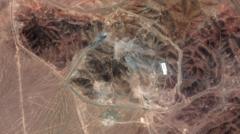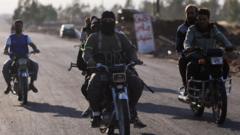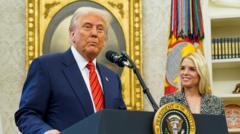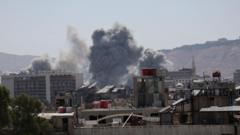John Ratcliffe, director of the CIA, asserts that U.S. airstrikes on Iran's nuclear sites caused extensive damage and delayed their progress for years, contradicting a leaked Pentagon assessment claiming minor setbacks. Tensions remain high as President Trump prepares for possible talks with Iran.
CIA Director Claims U.S. Strikes on Iran's Nuclear Facilities Have Inflicted Severe Damage

CIA Director Claims U.S. Strikes on Iran's Nuclear Facilities Have Inflicted Severe Damage
CIA chief states that U.S. military operations have significantly undermined Iran's nuclear capabilities despite contradictory intelligence reports.
The head of the CIA, John Ratcliffe, has asserted that the recent U.S. military strikes have "severely damaged" Iran's nuclear facilities, setting back the country's nuclear program by years. This statement contrasts sharply with a leaked preliminary assessment from a Pentagon intelligence agency, which suggested that significant components of Iran's nuclear program remain unscathed following the U.S. strikes—an assertion that reportedly angered President Trump.
Ratcliffe indicated that key Iranian nuclear installations have been destroyed but did not claim that Iran's nuclear program was entirely removed. This revelation comes just a day after the leak of a Pentagon report that estimated the recent bombings would only delay Iran's nuclear ambitions by a matter of months. Trump, however, reaffirmed his stance via social media, alleging that the media misrepresented the impact of the military action, which he characterized as "obliteration."
Meanwhile, Trump prepared for potential negotiations with Iran regarding its nuclear aspirations. He has suggested, in his statements to the press, that there would be a demand for Iran to cease its nuclear activities in any future discussions, which are rumored to take place next week, despite Iran not confirming any engagement.
During a briefing in The Hague, Trump reiterated the significant effects of the airstrikes, stating, "It was very severe. It was obliteration," and mentioned an upcoming news conference to bolster support for U.S. military operations.
According to Ratcliffe, new intelligence from reliable sources indicated that several critical Iranian nuclear sites were damaged, which would necessitate rebuilding efforts spanning years. These assertions align with reports from the Israeli Atomic Energy Commission, which stated that the strike on the Fordo facility notably compromised its infrastructure.
Despite the damage reported, not all assessments are corroborative. Some Iranian officials argue that essential infrastructure remains intact, while experts have raised concerns that Tehran may have relocated its highly enriched uranium. UN nuclear watchdog chief Rafael Grossi noted the possibility that Iran has moved vital resources to avert damage during the strikes.
As the situation evolves, the conflicting intelligence reports from multiple U.S. agencies highlight the complexity of assessing the damage inflicted on Iran's nuclear program. The U.S. carried out strikes utilizing 125 military aircraft targeting three primary sites, with satellite imagery revealing structural damage but leaving questions about the extent of the harm caused to underground installations.





















